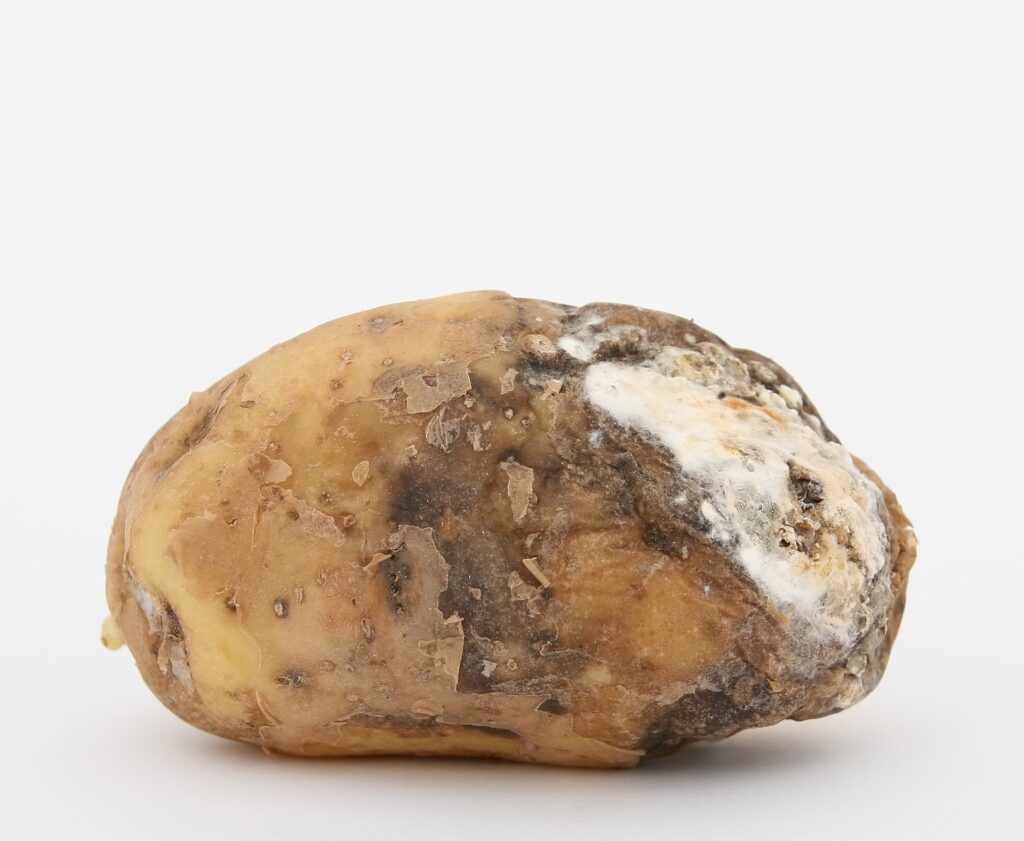Mould is a type of fungi that thrives in damp environments. Mould reproduces by releasing tiny spores into the air. These spores travel until they find a suitable surface to land on and start growing. Knowing how mould grows can help you to understand how and where it can take hold in your living spaces.
For it to grow ideally, four things are required: oxygen, moisture, food and warmth. If even one of these factors is absent, mould will not struggle to establish itself. Keep reading to learn more about how mould grows. Also, what you can do to prevent it from becoming comfortable in your home.
Mould spores are everywhere – central to how mould grows
Mould spores are found in the air and can enter your home through open doors, windows, or ventilation systems. The spores occur naturally in the environment; so they are virtually everywhere with us, every day. They usually pose no risk to our health when we are outside, inhaling large quantities of them is a big problem. This is more likely to happen when there is an accumulation of it in the enclosed spaces of our homes.
If left unchecked, the spores can quickly spread through your home, causing allergic reactions and even structural damage.
The air that mould breathes
It may come as a surprise to many, but the growth and survival of mould are highly dependent on oxygen. Certain types of mould do occur in environments with low amounts of oxygen. But they generally require good levels of oxygen to divide and spread effectively. Various moulds that grow on materials like wood actively use oxygen to break down and rot it.
Furthermore, oxygen also serves as a food source for some species as it is converted into energy through aerobic respiration.
Mould spores easily move indoors on air currents and is a natural occurrence. Reducing oxygen in your home is not a reasonable or pratical option. So,it is even more important to make changes other things it needs to grow in order manage it.
Dampness and moisture – essential to how mould grows and stays
Mould is a type of fungi that grows in damp, humid environments. So it makes sense that it will be happy to find such environments to set up camp and multiply. It releases powerful spores (its version of seeds). The seeds combined with dampness, is a major part of how mould grows and spreads within a short period.

Mould growth is directly linked to the moisture content in the air and on surfaces. Therefore, it is important to control relative humidity levels and dampness in areas like bathrooms,kitchens and basements.
Amongst others, a couple of the easiest and most reliable methods are ventilation by opening windows and using dehumidifiers.
Why not take preventive measures today? Otherwise, you’ll end up dealing with mould issues later on!
Food for mould
Many people easily link mould with dampness, but they often don’t realise that it also needs food to thrive. It likes any organic materials including dust, paper, fabrics, foodstuffs etc. That’s why mould can commonly be found in your home and other buildings where its food is abundant.
It can be obvious to see, especially when it has firmly taken hold. But it also hides away. Then it lingers behind furniture or around window frames, qt the back of a wardrobe etc. These areas tend to be darker and damper than the rest of the room.
Typically, mould will feed on anything high in sugar or starch content. This includes things such as bread crumbs, cookies or spilt food and drinks. It also wants a damp environment to thrive. It loves dark damp areas such as showers, or puddles of water leaking from pipes or taps. Also, behind fridges or washing machines, or along window framing.
As well as feeding itself with starches and sugary crumbs, it east most other organic material too. For example, wood or paper, carpets, sofa materials are all on the menu! Keep these dry to reduce the chances of mould growing there. This adaptability to using a wide range of materials as food is a core part of how mould grows in so many different places.

Left unchallenged, it is in its nature to spread. It is this that can cause long-term damage to household items, to buildings. And worryingly can lead to serious health issues for people and pets in the vicinity.
To reduce the risk of mould growing in your home, be sure to ventilate any rooms that get especially damp. Clean up any excess mess and spills as soon as possible. Install a dehumidifier to keep that moisture in check.
Warmth encourages accumulation
Mould spores are always present in indoor and outdoor air, but the temperature inside your house gives them the ideal environment for growth. In general, mould thrives when temperatures are between 10-35 degrees Celcius and the humidity is higher than 55%. The consisten temperaure in our home is very apealing, so that with the addition of any dampness, mould can rapdily become a problem.
The key to preventing mould growth in your home is maintaining a moderate temperature as well as reducing moisture wherever possible – any bathroom or kitchen tile with poor ventilation can quickly become a breeding ground.
If you’re concerned about mould affecting indoor air quality, investing in an energy-efficient dehumidifier to keep humidity low could make all the difference.
From microscopic strands to furry mats – the magic of how mould grows so well
Once mould starts growing it forms hyphae and networks of hyphal strands. It spreads quickly by releasing spores into the air. Once mould begins to form, it uses hyphae (growth strands) as a means of rapidly expanding and colonising its space. This method gives mould the capability to spread through air-borne spores, which are small umbrella-shaped cells with a single nucleus; each one carrying genetic information that greatly aids in reproduction. Left unchecked, this process allows mould to rapidly infest an area by germinating its spores on a food-rich surface. Thousands to millions of hyphae come together to form the commonly known furry, coloured appearance of mould.
Alongside regualr cleaning, maintain the humidity level below 50%, and actively deal with any dampness. This way mould growth can effectively be kept under control and limited. Therefore, while patchy areas of ‘mild’ mould or mildew can be troublesome it does also serve as an early warning system that should encourage us to take preventative measures before it develops into a full-blown infestation.
The potential health risks of ignoring it
Mould can present a serious health risk causing allergic reactions and other health problems. As the release of spores into the air is central to how mould grows, people can experience coughing, sneezing,and other allergic symptoms from inhaling them. This can be concerning for those exposed to cramp, damp, spaces where there is active mould growth.

To protect yourself from these harmful effects of mould, you should ensure that damp areas stay well-ventilated and regularly check for signs of mould growth. Regular early removal of superficial mould with the appropriate cleaning supplies may prevent any potential allergies caused by the spores. More established mould colonisation must be dealt with by professionals. Trying to deal with this yourself will make you and others much more unwell.
Some easy steps to keep mould manageable
- To keep mould from growing in your home, one of the most important things to do is to keep the humidity level low. Ensure regular and effective ventilation, use a dehumidifier, and actively manage the sources of dampness in the home.
- So, it is important to clean up any spills or leaks immediately and carry out inspections around areas prone to dampness and water damage, such as basements, attics, kitchens, and bathrooms.
- Ventilate rooms often – this will have the added benefits of reducing the concentration of any other air-borne infections (colds, coronavirus etc) and pollutants (cigarette smoke).
- Remain vigilant and look out for any signs of mould trying to move into your home.
Mould spores are found in the air and can enter your home through open doors, windows, or ventilation systems. It needs dampness, air and food to grow, so it will often be found in areas where these conditions exist. Once mould starts growing, it can spread quickly by releasing more spores into the air. It can cause health problems like coughing, sneezing, and watery eyes.
To prevent mould from growing in your home, keep the humidity level low and clean up any spills or leaks immediately. Knowing about the conditions that can lead it to become a problem, offers opportunities to manage these conditions to limit the chances of mould becoming a permanent visitor in your home.
